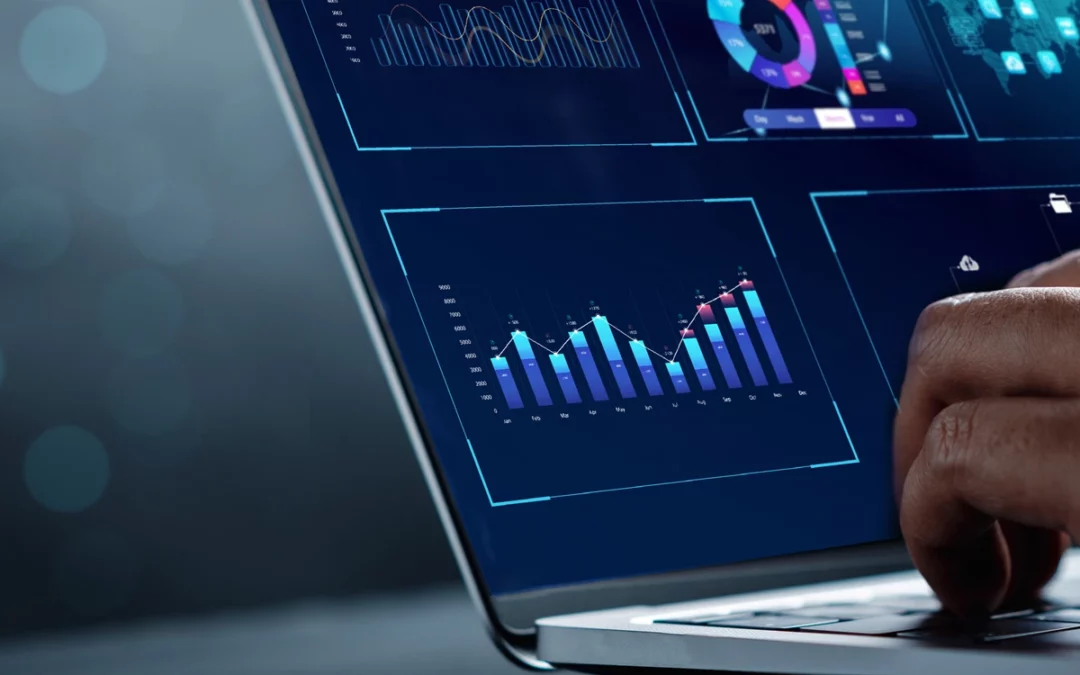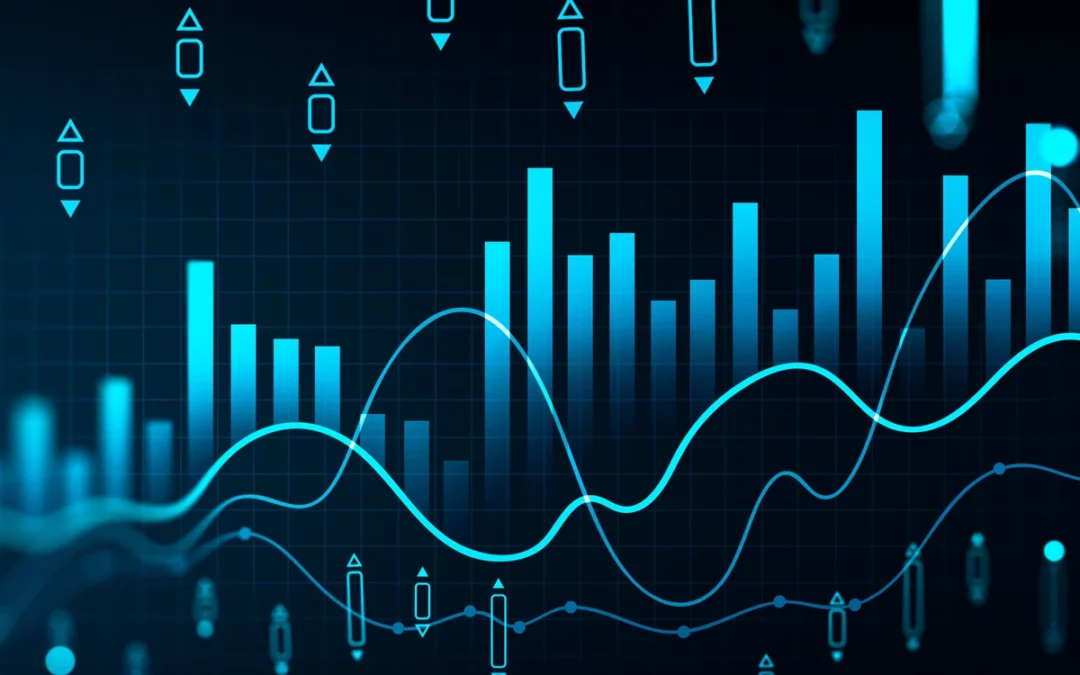
Apr 1, 2024 | Blog
In statistical analysis and econometrics, endogeneity creates one of the biggest challenges to accurate results. Endogeneity happens when an explanatory variable correlates with the error term in a regression model. This violation of classical regression assumptions produces biased and inconsistent estimates. At Select Statistical Consulting, we help researchers, economists, and social scientists detect and correct endogeneity so their findings remain reliable and defensible.
What is Endogeneity?
Regression analysis assumes that independent variables are exogenous, not correlated with the error term. Endogeneity breaks this rule. When it occurs, ordinary least squares (OLS) estimates lose validity, leading to misleading conclusions.
Causes of Endogeneity
Endogeneity can arise for several reasons, but the three most common are:
- Simultaneity: Causality runs in both directions between the dependent and independent variables. For example, in supply and demand models, price influences demand, but demand also shapes price.
- Omitted Variable Bias: A model that excludes a relevant variable leaves its effect inside the error term. Because the omitted variable links both the dependent and independent variables, the error term becomes correlated with the regressors.
- Measurement Error: If an independent variable is recorded inaccurately, the measured value differs from the true one. This error distorts estimation and introduces endogeneity.
Why Endogeneity Matters
When analysts ignore endogeneity, they produce biased parameter estimates, inconsistent results, and faulty conclusions. Policymakers, businesses, and researchers who rely on such models may pursue strategies that waste resources or miss real relationships. In fields like economics, finance, and social sciences, those mistakes carry serious consequences.
How to Address Endogeneity
Researchers and statisticians can apply several techniques to reduce or remove endogeneity
- Instrumental Variables (IV): Use instruments related to the endogenous variable but unrelated to the error term.
- Two-Stage Least Squares (2SLS): Predict the endogenous variable with instruments, then re-run the main regression with the predicted values.
- Difference-in-Differences (DiD): Control for unobserved variables that remain stable over time.
- Control Functions: Model the source of endogeneity directly, often for issues like selection bias or simultaneity.
Conclusion
Endogeneity creates real risks in statistical modeling, but researchers can overcome it with the right methods. At Select Statistical Consulting, we specialize in diagnosing endogeneity and applying proven econometric techniques to deliver valid, reproducible insights. If you want your analyses to stand up to scrutiny and support confident decision-making, let us help you turn complex data challenges into clear, actionable knowledge.

Mar 1, 2024 | Blog
In today’s data-driven age, both businesses and researchers find themselves at a crossroads: inundated with information and tasked with deriving actionable insights. Whether it’s predicting market trends or discerning patterns in complex datasets, understanding the nuances between descriptive and predictive analysis becomes pivotal. Let’s dive into the complexities of these analytical tools and determine when each shines the brightest.
Descriptive Analysis: The “What Happened?” Approach
Descriptive analysis operates as a rear-view mirror, presenting a clear snapshot of past events. By analyzing historical data, it answers the foundational question: “What has happened?”
When to Use
Descriptive analysis is paramount when you need a clear understanding of past trends, behaviours, and events. In the absence of accurate descriptive analysis, you struggle to pinpoint the causes of specific trends and behaviours, limiting their ability to strategize and craft effective responses to any irregularities.
Why to Use
Descriptive analysis provides a foundational understanding of past patterns, behaviours, and events, enabling you to extract meaningful insights from large datasets, identify underlying trends, make evidence-based decisions, and set the stage for predictive and prescriptive analysis, ensuring that strategies and hypotheses are rooted in concrete historical evidence.
Predictive Analysis: The “What Could Happen?” Approach
Predictive analysis employs statistical methods and machine learning techniques to make educated forecasts using historical data. It provides estimates, not certainties, about what might occur in the future, positioning it as an advanced form of data analysis that relies on probability-driven forecasts instead of just analyzing existing facts.
When to Use
Predictive analysis is crucial when you aim to anticipate potential outcomes, trends, or phenomena based on historical datasets, utilizing it as a key methodological tool to test hypotheses, inform future studies, and provide a forward-looking perspective that enhances the depth, relevance, and applicability of your findings in real-world scenarios.
Why to Use
Predictive analysis empowers you to forecast potential trends and outcomes based on historical data, thereby enriching you analyses, enhancing the validity of your hypotheses, and ensuring your findings not only reflect past and present observations but also provide invaluable insights and guidance for future scenarios, decisions, and interventions.
“Descriptive and predictive analysis are two sides of the same coin”
While they cater to different needs, both descriptive and predictive analysis are essential to a holistic data strategy. Understanding what happened in the past provides a foundation (descriptive) upon which you can build and anticipate future trends (predictive).
In Conclusion
Whether you’re a business aiming to gain a competitive edge or a researcher pushing the boundaries of knowledge, data analysis is a formidable ally. By discerning the roles of descriptive and predictive analysis, you can tap into the full potential of your data, ensuring you don’t just understand where you’ve been, but have a clear vision of where you’re headed. Remember, in the vast ocean of data, let past insights chart the course for future discoveries.
“Make your decisions based on insights rather than hunches”

Feb 1, 2024 | Blog
In the vast landscape of modern research, with its burgeoning datasets and complex variables, the ability to make sense of data is paramount. Descriptive statistics and data visualization emerge as two critical instruments in a researcher’s toolkit, helping them navigate and interpret this complex terrain.
At the heart of any research lies the raw data, a vast expanse of numbers and observations. Descriptive statistics serve as the compass in this expanse, providing essential insights about the data’s central tendencies, dispersions, and overall patterns. Measures such as mean, median, mode, and standard deviation give researchers a concise snapshot, allowing them to gauge the nature and characteristics of their dataset. Without this foundational understanding, diving deeper into analysis or drawing meaningful conclusions can be challenging and risky. Essentially, descriptive statistics set the stage, ensuring that researchers grasp the baseline facts before venturing into complex analyses.
“Descriptive statistics provide a foundational overview of data, enabling researchers to capture and communicate the essential characteristics and patterns within their datasets.”
But while numbers and calculations are central to understanding data, presenting these findings is a separate challenge. Transforming numbers into visuals (e.g., graphs, charts, plots) adds a layer of clarity and comprehension. The human brain is wired to process and remember visual information more effectively than raw numbers. So, a well-crafted bar graph or a scatter plot can make discernible patterns, trends, or anomalies leap out, offering insights that might be buried in tables of numbers. This visual representation becomes especially crucial when the goal is not just analysis but also effective communication of findings to peers, stakeholders, or a broader audience.
“Data visualization transforms complex datasets into intuitive visuals, enhancing comprehension and facilitating clearer insights in research.”
Moreover, the integration of descriptive statistics with visual aids ensures that data remains transparent and comprehensible. This clarity is vital for the peer review process, replication studies, and for audiences who seek to understand the research methodology without ambiguity. Especially in research areas where decisions based on findings are impactful, such as public policy or clinical trials, the ability to convey data transparently becomes even more crucial.
As research increasingly caters to interdisciplinary audiences and even the public, the need for clear communication becomes even more pronounced. Not everyone has expertise in statistical jargon, but a well-designed visualization can bridge that gap, making research more inclusive and its findings more widely understood.
In essence, descriptive statistics and data visualization are more than just tools; they’re essential narratives in the storytelling of research. They decode complex datasets, making them comprehensible, relatable, and actionable. As data continues to grow in importance in our decision-making processes across fields, ensuring it speaks clearly to all is more crucial than ever.

Jan 1, 2024 | Blog
In today’s data-centric world, the term “analytics” is often thrown around in business meetings, academic research discussions, and tech conferences. But what does it truly mean, and how does one differentiate between its various types? At our statistical consultancy, we delve deep into the world of analytics every day, and we’re here to demystify its multifaceted nature for you.
how to use the various types of analytics, such as descriptive, diagnostic, predictive, and prescriptive analytics. Sailing Through the Sea of Analytics: A Guide to the Distinct Waves of Data Insights.
Descriptive Analytics: The Rear-View Mirror
Descriptive analytics is akin to looking in the rear-view mirror. It focuses on analyzing historical data to determine what has happened in the past. Using a combination of basic statistical tools and summarization techniques, it offers insights into patterns, trends, and anomalies. For businesses, this might mean analyzing past sales data to discern seasonality effects or tracking website traffic over time.
Diagnostic Analytics: The Investigative Lens
Where descriptive analytics highlights what has happened, diagnostic analytics delves into why it happened. This branch of analytics is about understanding the root causes of a particular event or trend. By employing techniques like data discovery, drill-down, and data mining, diagnostic analytics aids in determining causative factors and relationships within the data.
Predictive Analytics: The Crystal Ball
Peering into the future is the realm of predictive analytics. It leverages historical data combined with statistical algorithms and machine learning techniques to make predictions about future events. From forecasting stock market trends to predicting disease outbreaks, predictive analytics offers a probabilistic view of what might lie ahead.
Prescriptive Analytics: The Strategic Advisor
Once you know what has happened, understood why it happened, and have predictions for the future, the next step is to determine what to do about it. Prescriptive analytics offers recommendations on possible courses of action to achieve desired outcomes or mitigate potential risks. Using sophisticated modelling techniques and algorithms, it provides decision-makers with actionable insights and strategies.
Real-Time Analytics: The Pulse Checker
In an era where change is constant, and speed is of the essence, real-time analytics offers insights on-the-fly. It processes data as it comes in, providing immediate feedback. Whether it’s monitoring live traffic on a website or tracking social media mentions during a live event, real-time analytics helps businesses and researchers stay agile and responsive.
In conclusion
The world of analytics is rich and diverse, offering a plenty of tools and methodologies to extract meaningful insights from data. Regardless of the type, the end goal remains the same: to transform raw data into actionable knowledge. At our statistical consultancy, we are committed to helping individuals and businesses navigate this vast landscape, ensuring that decisions are informed, strategic, and impactful. Dive into the world of analytics with us, where data not only informs but also inspires.




